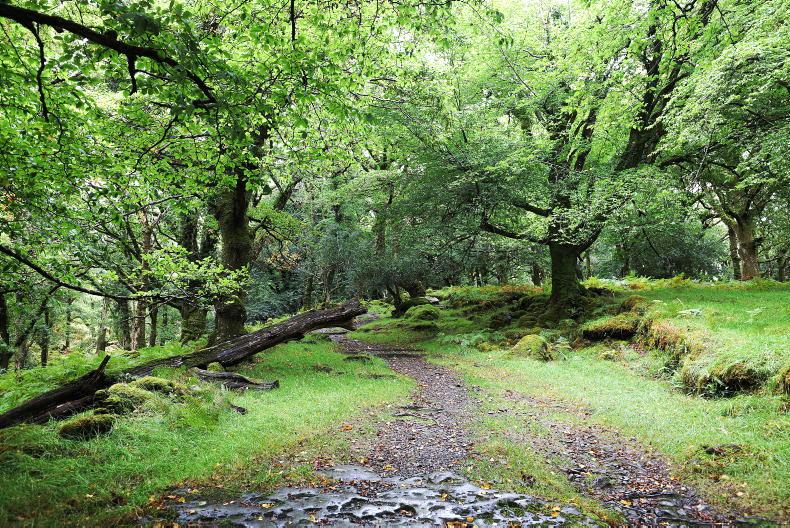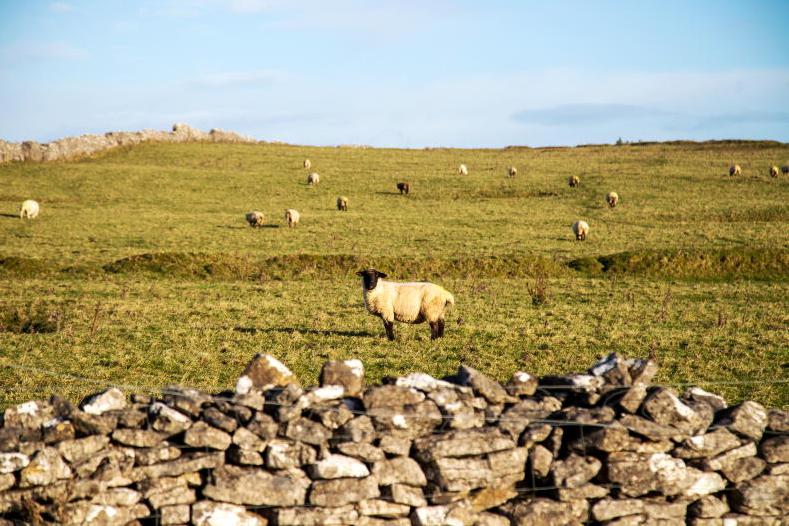Unlike many other tree species native to Ireland, the yew tree is rarely seen along roadsides or in hedgerows. As yew leaves and their fruit are poisonous to most animals and humans, trees are seldom planted where animals can easily access them.
Yew trees are, however, a common sight in churchyards and graveyards, which may have been a way to deter people many years ago from allowing their animals to graze in these places. Birds such as song thrushes and blackbirds can safely eat the fruit of yew trees and often nest within its branches.
Yew trees sometimes grow within old woodlands, but are notable not only for where they grow, but also for how long they can live. An oak tree may live for about 400 years, but a yew tree can live for over 3,000 years.
Yews are more likely to live to about 1,500 years. The age of a yew tree can be hard to judge based on height, as often a tree will not grow above seven metres high.
An oak tree may live for about 400 years, but a yew tree can live for over 3,000 years
Older yews tend to be wide in girth (measurement of the width of the tree trunk taken at a right angle to the trunk), to have hollowing in the trunk and dead wood in the tree canopy. There are at least 500 yew trees across England that are older than the churches built beside them.
Yew trees are coniferous or evergreen, their leaves dark green in colour and needle-like. The fruit of the yew tree ripens in the autumn and is a single seed surrounded by the aril.
The aril is the fleshy, vibrant red part of the fruit. When birds eat the yew fruit, they help to disperse the yew seeds further away from the tree.
Yew trees are also often grown from cuttings, including the Irish yew (Taxus baccata ‘Fastigiata’), which is thought to be a mutant variation of the common yew.
The Irish yew is different from the common yew in its appearance. The leaves are a darker green and grow all around the twig rather than in rows.

Florence Court in Co Fermanagh.
The shape of the Irish yew is also different, as it grows more upright and more compact than the common yew. Most Irish yew trees in the world today are believed to descend from a single yew tree. This original Irish yew tree is still alive in Florence Court in Co Fermanagh.
In 1767, a farmer called George Willis discovered two unusual young yew trees on the Cuilcagh mountain. George planted one in his own garden and gave one to the landlord, Lord Mount Florence. The tree planted in George’s garden died in 1865, but the other tree planted in Florence Court is the source of most Irish yews across the globe.
Cuttings were taken from the Florence Court tree and its descendants. Trees which grow from these cuttings retain the distinctive column shape of the Irish yew. Trees grown from the seeds, however, resemble the shape of the common yew instead.
Read more
IFJ Junior: common crane conservation in Ireland’s bogs
The professor explains: What’s the craic with Carbon?
Unlike many other tree species native to Ireland, the yew tree is rarely seen along roadsides or in hedgerows. As yew leaves and their fruit are poisonous to most animals and humans, trees are seldom planted where animals can easily access them.
Yew trees are, however, a common sight in churchyards and graveyards, which may have been a way to deter people many years ago from allowing their animals to graze in these places. Birds such as song thrushes and blackbirds can safely eat the fruit of yew trees and often nest within its branches.
Yew trees sometimes grow within old woodlands, but are notable not only for where they grow, but also for how long they can live. An oak tree may live for about 400 years, but a yew tree can live for over 3,000 years.
Yews are more likely to live to about 1,500 years. The age of a yew tree can be hard to judge based on height, as often a tree will not grow above seven metres high.
An oak tree may live for about 400 years, but a yew tree can live for over 3,000 years
Older yews tend to be wide in girth (measurement of the width of the tree trunk taken at a right angle to the trunk), to have hollowing in the trunk and dead wood in the tree canopy. There are at least 500 yew trees across England that are older than the churches built beside them.
Yew trees are coniferous or evergreen, their leaves dark green in colour and needle-like. The fruit of the yew tree ripens in the autumn and is a single seed surrounded by the aril.
The aril is the fleshy, vibrant red part of the fruit. When birds eat the yew fruit, they help to disperse the yew seeds further away from the tree.
Yew trees are also often grown from cuttings, including the Irish yew (Taxus baccata ‘Fastigiata’), which is thought to be a mutant variation of the common yew.
The Irish yew is different from the common yew in its appearance. The leaves are a darker green and grow all around the twig rather than in rows.

Florence Court in Co Fermanagh.
The shape of the Irish yew is also different, as it grows more upright and more compact than the common yew. Most Irish yew trees in the world today are believed to descend from a single yew tree. This original Irish yew tree is still alive in Florence Court in Co Fermanagh.
In 1767, a farmer called George Willis discovered two unusual young yew trees on the Cuilcagh mountain. George planted one in his own garden and gave one to the landlord, Lord Mount Florence. The tree planted in George’s garden died in 1865, but the other tree planted in Florence Court is the source of most Irish yews across the globe.
Cuttings were taken from the Florence Court tree and its descendants. Trees which grow from these cuttings retain the distinctive column shape of the Irish yew. Trees grown from the seeds, however, resemble the shape of the common yew instead.
Read more
IFJ Junior: common crane conservation in Ireland’s bogs
The professor explains: What’s the craic with Carbon?










SHARING OPTIONS